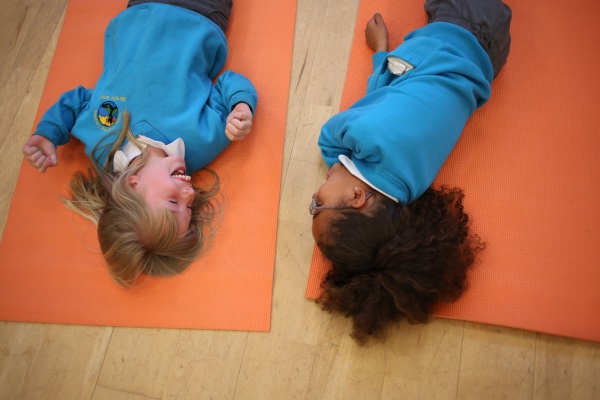Implementing laughing techniques in the classroom can help pupils become more emotionally resilient. Katie Rose White explains how.

Stress is a contributing factor to anxiety. Anxiety can lead to panic, depression and low self-esteem.
Finding affordable and effective ways to manage stress in schools could help to prevent this snowballing effect, for pupils and teachers.
That’s why something as simple as laughter might be the answer we are all looking for.
Laughter has been proven to reduce stress-related hormones in the blood like epinephrine and cortisol. It naturally makes us feel good, with almost instant results. Our body has the capacity to overcome stress if we choose to respond to it with laughter.
As well as reducing stress-related hormones, laughter also releases feel good endorphins. These endorphins send messages that say to the brain ‘I’m enjoying myself, I’m safe and happy’.
It naturally pushes the air out of the lungs helping you feel replenished and rejuvenated. It energises the body and allows you to shake off any tension you might be carrying.
‘How can I just laugh?’ you might ask. Well it’s simple.
When you engage in a forced or fake laugh, your body gets tricked into thinking it’s laughing at something that’s funny and subsequently releases chemicals and signals that make you laugh naturally. The laughing techniques are just exercises that encourage this initial fake laugh.
That’s why I like to see laughter as our own built-in resilience, freely available whenever we encounter stressful situations. From a spout of nerves to a full-blown panic attack, it really can change our emotional and physical state.

Research suggests that anxiety and excitement are actually the same physiological states for your body. Encouraging a child to laugh when they feel anxious or panicked can be more effective than initiating deep breaths and attempting to calm them.
When the child is already in that heightened state of panic, laughter tricks them into thinking it is excitement instead. On the other hand, deep breathing requires them to battle against their body.
When the techniques are practiced within a school, teachers can use laughter as an effective tool for mental health first aid. Laughter practices are short so well-suited for inclusion in tutor time, assembly, or circle times. In PSHE lessons we can teach the more specialised exercises that children can use when faced with difficult situations.
Encouraging a child to laugh when they feel anxious or panicked can be more effective than initiating deep breaths
Laughter is wonderfully inclusive as you do not need to be able to use or process language to join in with a good laugh. I have personally supported pupils with a wide range of needs and abilities in utilising therapeutic laughter, and I have supported their teachers too.
It’s great to be offering something to schools that everyone can benefit from.
Implementing laughter for its therapeutic benefits is simpler than it might sound. Below are a few exercises to get started with your pupils.
Applying this exercise in class before introducing a new topic will encourage pupils to focus and relax. If you want to include a little bit of giggling, encourage them to make eye contact with their friends.
You may be worried that giggling will turn into silliness, but I find if you present laughter to pupils as a planned activity they actually take it quite seriously.
This exercise is a simple energiser, and a great way to release stress and tension in the body. It could be used in between exams as a way of exerting energy and relieving stress.
This is the technique I encourage children to use when they feel scared, upset, angry or worried. Sometimes asking them how they could use it opens up conversation.
Further reading